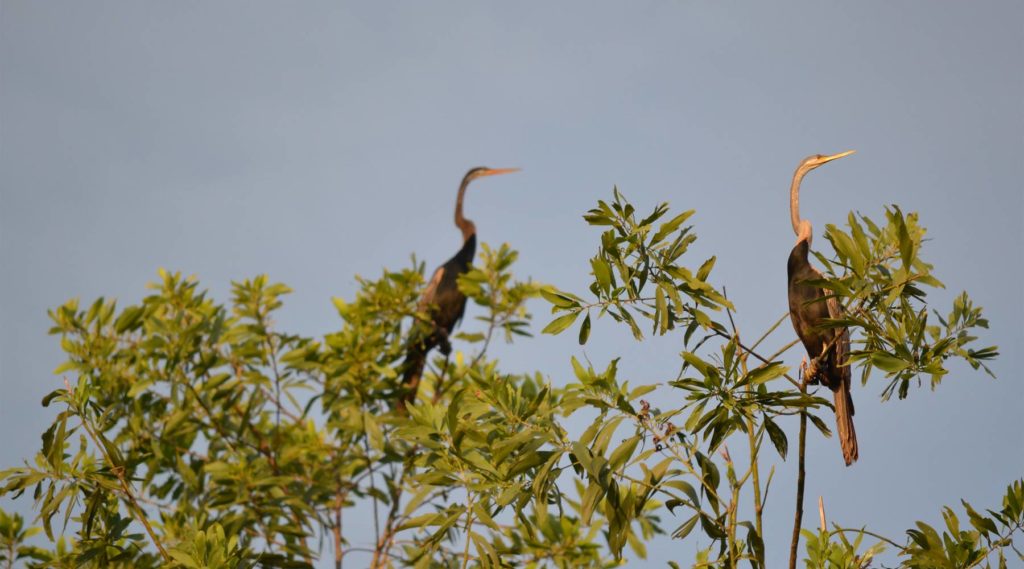What is Vam Ho Bird Sanctuary?
Location & Background
Vam Ho Bird Sanctuary is located in Ba Tri District, about 35 kilometers (roughly an hour’s drive) from Ben Tre town, along the Ba Lai River. The sanctuary was officially established in the 1980s, after increasing numbers of migratory birds began nesting here year after year. Depending on which source you look at, the reserve covers around 40 to 67 hectares, but either way, it’s a relatively small pocket of protected forest rather than a vast national park.
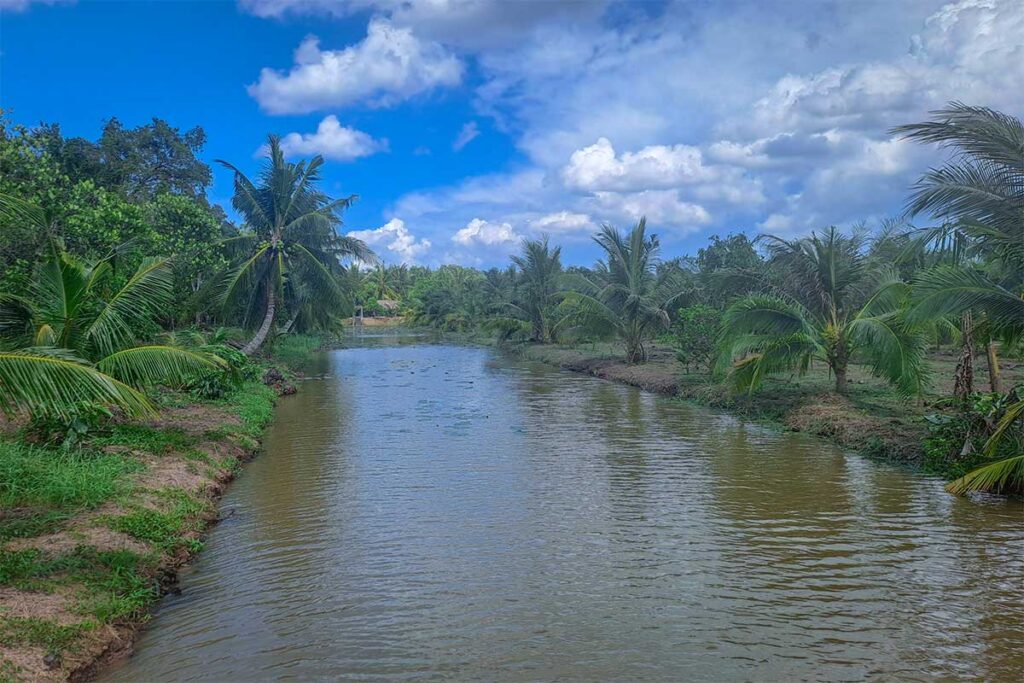
Landscape & Vegetation
The sanctuary is a submerged forest typical of the Mekong Delta. You’ll find mangroves, nipa palms, and date palms dominating the higher areas, while reeds and other water plants grow in the low-lying wetlands. Interlaced canals cut through the forest like a spider’s web, supporting fish, crabs, and shrimp that in turn provide food for the birds. The scenery is quiet and green, with a dense canopy that gives the place a cool, shaded feel, even on hot days.
Birds & Wildlife
Roughly 80 to 120 species of birds have been recorded here, depending on the season. The most common are storks, herons, egrets, and the occasional white ibis. During the breeding months, thousands of storks can gather to nest in the trees, creating the most lively birdwatching moments.
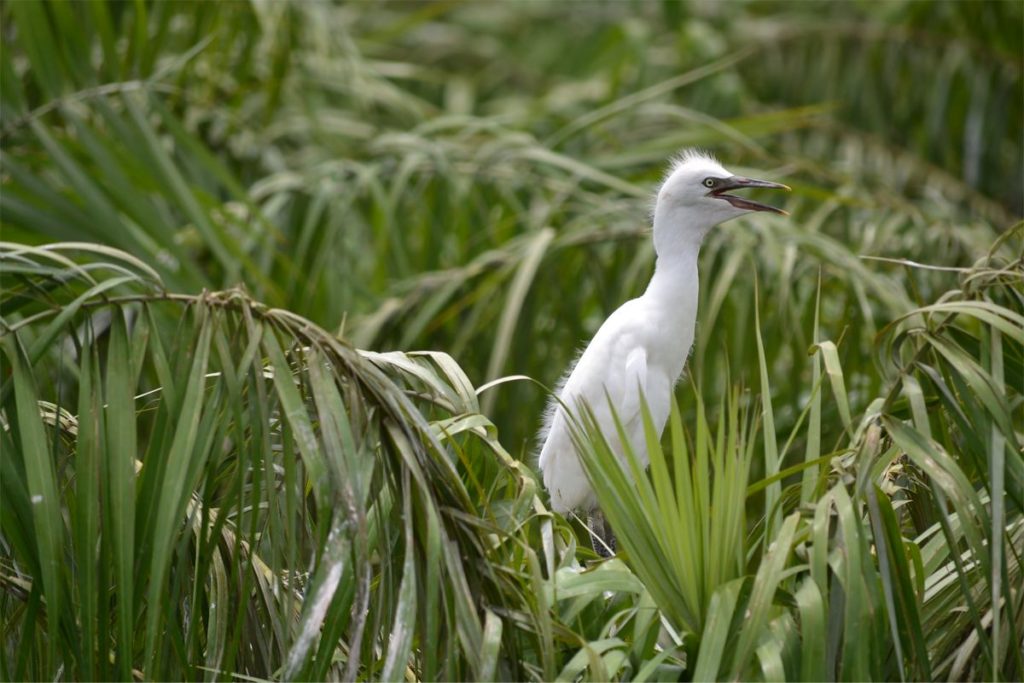
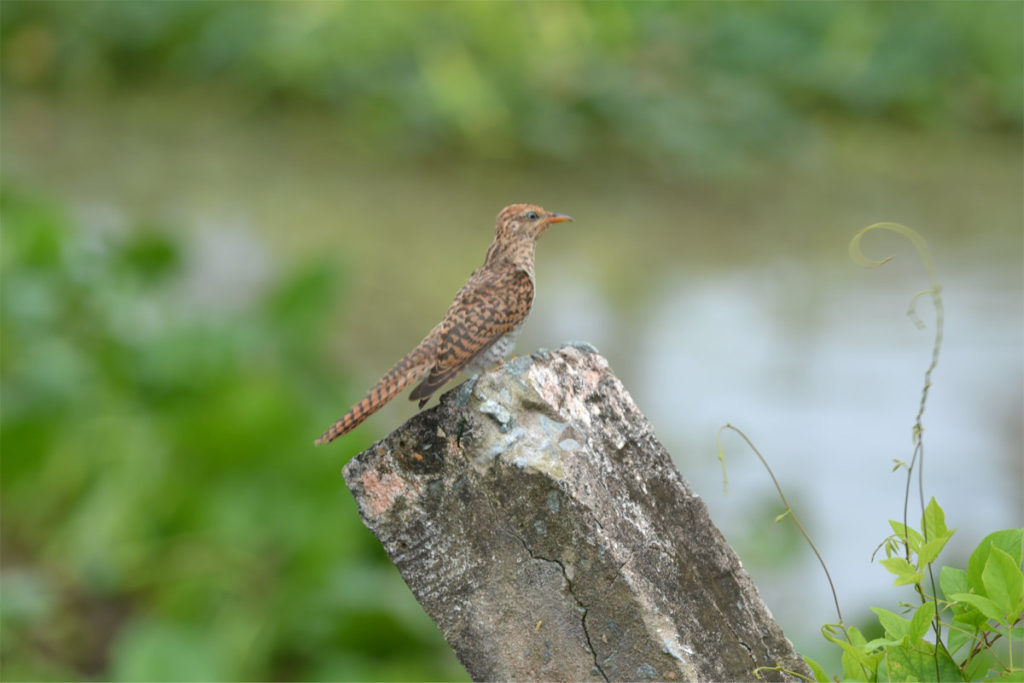
Outside those months, the sanctuary feels calmer, with smaller numbers of resident birds. Other wildlife you might come across includes bats, squirrels, snakes, and iguanas, though spotting them is not guaranteed.
Highlights of Visiting Vam Ho Bird Sanctuary
1. Birdwatching by boat
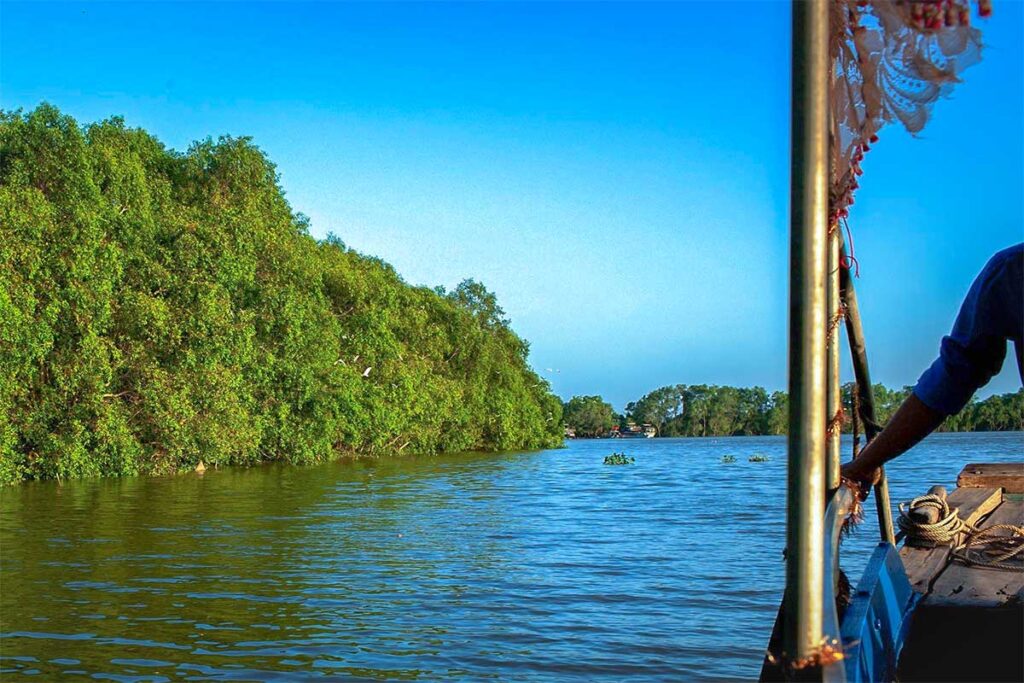
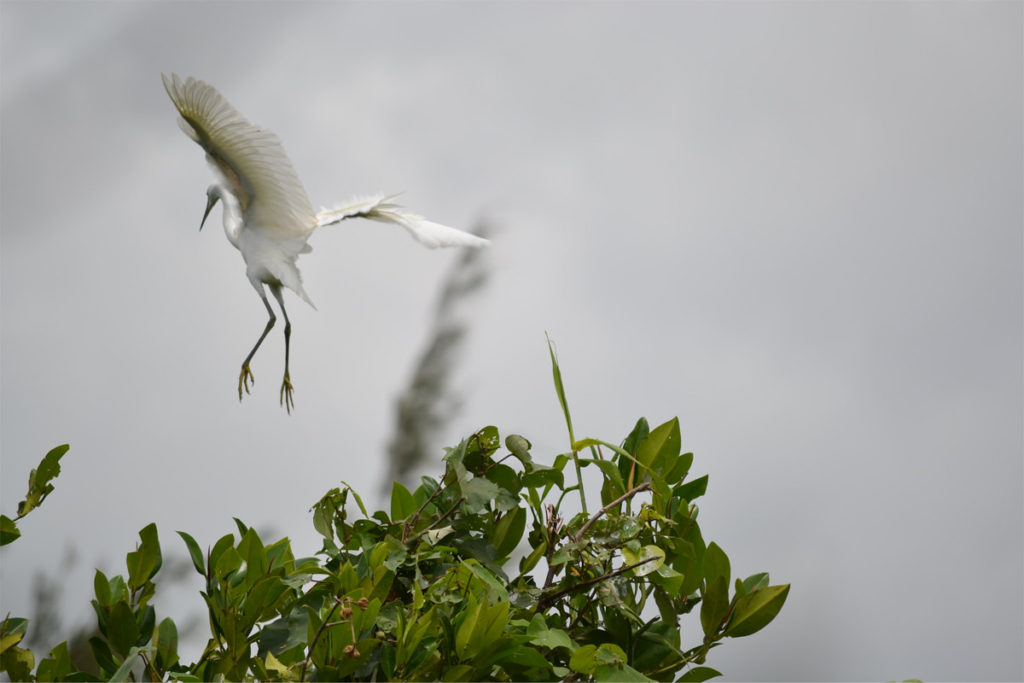
The most popular way to explore Vam Ho is by taking a small boat through the narrow canals. In the breeding season, this gives you the best chance of seeing storks and herons up close in the trees. Outside of peak months, the birdlife can be underwhelming, but the ride itself is still relaxing, with calm waters, dense forest, and the occasional splash from fish or crabs. It’s more about enjoying the quiet scenery than expecting dramatic wildlife encounters.
2. Bamboo bridges & Forest walks
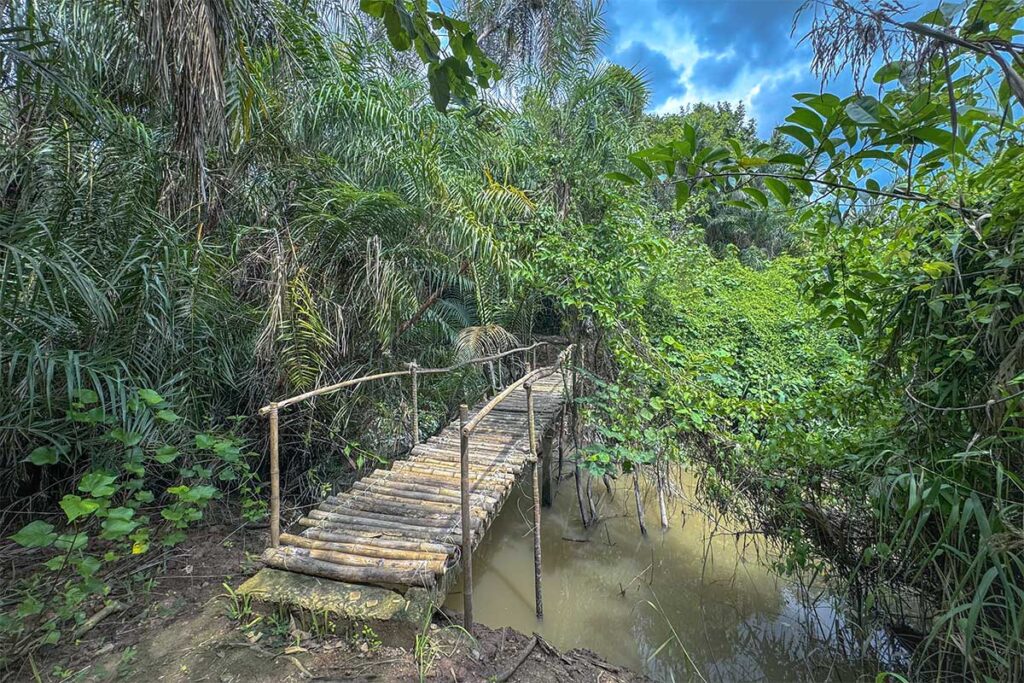
Several bamboo bridges and narrow paths let you wander deeper into the mangrove forest. Some are the traditional “monkey bridges” that test your balance, while others are sturdier. Hammocks and shaded huts are dotted around, making it a pleasant spot to pause, especially in the middle of the day when the heat builds.
3. War Remnants & Resistance Base
Scattered within the sanctuary are a few old hideouts used during the Vietnam War. These small bunkers and shelters aren’t major attractions on their own but add an extra layer of history to the visit. It’s a reminder that the area hasn’t only been a haven for birds but also played a role in local resistance.
4. Local activities & Folk games
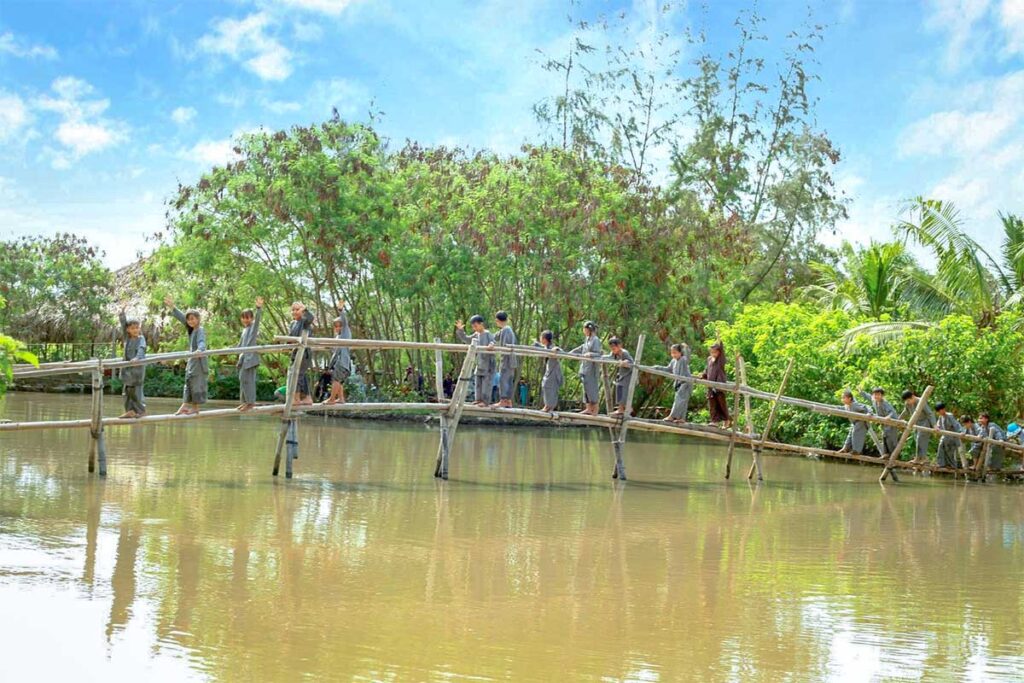
For those visiting with children, the sanctuary has set up a handful of simple activities: rope crossings, swings, fishing ponds, and balancing games on wooden beams. They are fun in a lighthearted way, though quite basic, and may not appeal much to adult travelers unless you enjoy trying traditional countryside pastimes.
5. Orchards & Farm experiences
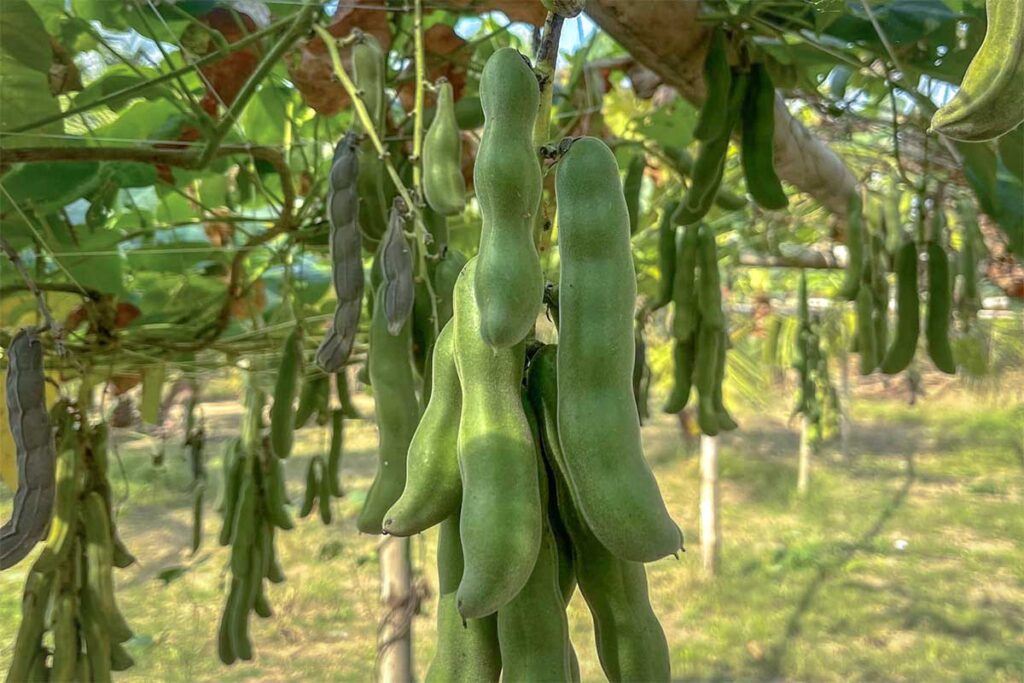
Some parts of the sanctuary include fruit gardens where coconuts, jackfruit, pomelos, and other tropical fruits grow. Depending on the setup, you may be able to taste what’s in season or even join a short cooking session using local ingredients. These activities vary, so it depends on the tour or local guide you arrange with.
6. Sunset & Fireflies experience
Late afternoon is often the most atmospheric time, when flocks of storks return to their nests and fill the sky. It’s also when the forest takes on a golden glow, making boat rides particularly scenic. Travelers staying overnight nearby sometimes mention fireflies along the canals after dark, but this is not always guaranteed.
Best time to visit
Birdwatching at Vam Ho depends heavily on timing. Some species live here all year, but the big flocks of storks and herons only gather during their breeding season. Weather also plays a role: hot, humid days in the wet season can make the forest less comfortable, while cooler, dry months are easier for travel.
Best months
From April to October, the sanctuary is at its busiest, with thousands of storks nesting in the trees. This is the most impressive time to see large colonies. Between October and April, there are still birds around, but in smaller numbers, so the atmosphere is calmer. In August, many migratory birds start to leave, and sightings can be limited.
Best time of day
The most rewarding times are at the edges of the day. At sunrise, you can see large numbers of birds flying out to feed. At sunset, they return in flocks to their nests, filling the trees and sky with movement. Midday is usually quieter, with fewer birds active and hotter conditions.
Visiting outside bird season
If you visit outside the peak months, don’t expect dramatic birdwatching. The forest is much quieter, with only a handful of resident species around. Even so, the boat rides, shaded mangroves, and fruit gardens still make for a pleasant stop if you’re already exploring Ben Tre. It becomes less of a birdwatching trip and more of a peaceful countryside nature visit.
How to get there
Location & Nearest towns
Vam Ho Bird Sanctuary sits in Ba Tri District, about 35 kilometers (roughly one hour by road) from Ben Tre town. Most travelers base themselves in the countryside around Ben Tre rather than the town itself, but the distance is similar. From Ho Chi Minh City, it takes about 2 to 2.5 hours by car, making it possible to combine the sanctuary with a day trip to Ben Tre’s coconut groves and small canals.
Transport options
- Private car with driver – The most comfortable and flexible option. A driver can pick you up from Ben Tre or even from Ho Chi Minh City and combine the bird sanctuary with other sights like fruit orchards or local craft villages.
- Motorbike or scooter – Roads are quiet and scenic, so this can be an enjoyable ride for those with experience and a valid license. If not confident, you can also hire a local motorbike driver for the trip.
- Bicycle – The distance from Ben Tre town is a bit far for the basic bikes most homestays provide. If you’re a serious cyclist or join a guided tour with proper bikes, it can be a rewarding rural ride.
- Local tours – Some homestays and agencies in Ben Tre arrange trips to Vam Ho, often including boat rides or orchard visits along the way.
Practical visiting information & Tips
Opening Hours & Entrance Fee
Vam Ho Bird Sanctuary is open during daylight hours, and there’s no general entrance fee to walk into the forest. However, most activities inside come with a small charge. Boat rides through the canals, entry to the fruit orchards, or trying out the folk games and hammocks usually require a separate fee, but costs are low and paid directly on site.
Facilities
Don’t expect much in the way of infrastructure. There is usually a small restaurant or food stall serving basic local dishes, and parking is available. Hammocks can be rented if you want to rest, and there are a few shaded huts, but facilities are otherwise very simple.
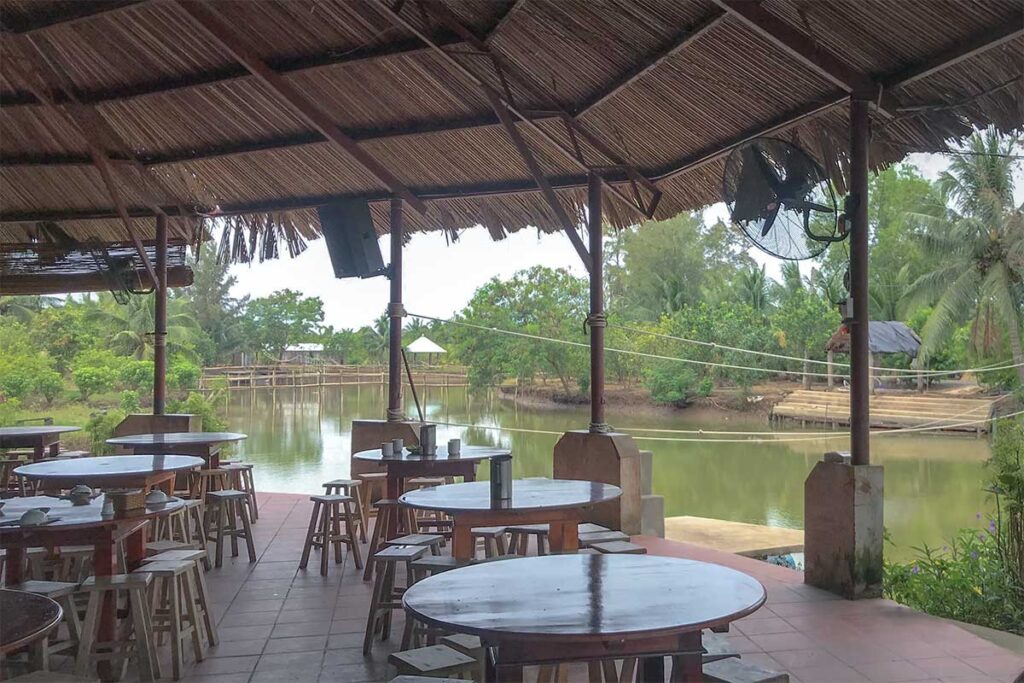
What to bring
- Mosquito repellent – essential in the forest, especially in the late afternoon.
- Sunscreen and hat – the boat trips are exposed to the sun.
- Water – limited shops inside, so better to bring your own.
- Camera or phone – for bird and landscape photos.
- Binoculars – useful if you carry them, though most travelers get by without.
Duration of bisit
A visit to Vam Ho usually takes 1–2 hours, including a short boat ride and a walk through the forest. If you add a meal, fruit orchard visit, or homestay nearby, you can easily stretch it into half a day.
Other nature reserves to visit
If your main interest is birdwatching, there are other sites in the Mekong Delta with more reliable sightings and larger habitats:
- Tram Chim National Park (Dong Thap) – the most famous birding site in southern Vietnam, especially for rare species like the sarus crane.
- Tra Su Cajuput Forest (near Chau Doc) – beautiful flooded forest with boat rides and good birdlife.
- U Minh Thuong and U Minh Ha (Ca Mau/Kien Giang) – large swamp ecosystems with wildlife and forest scenery.
If you’d like to compare options, see our full guide to the Best bird sanctuaries in the Mekong Delta.
Is Vam Ho Bird Sanctuary worth visiting?
Vam Ho Bird Sanctuary is worth visiting if you’re already spending time in Ben Tre and want a quiet nature stop. During the breeding season, the sight of storks and herons filling the trees is impressive, but outside these months the bird numbers are far smaller. Even then, the forest walks, boat ride, and simple countryside activities still make for a pleasant few hours.
That said, this is not the most spectacular bird sanctuary in Vietnam. It works best as part of a wider Ben Tre trip that also includes cycling through coconut groves, boat rides on small canals, or visits to local villages. If your main interest is birdwatching and you’re coming from Ho Chi Minh City, you’ll find Tram Chim National Park a more reliable choice.
